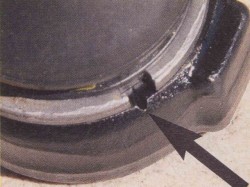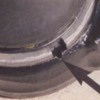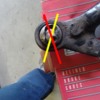First- what front shocks are on the car? If the car has stiff shocks (I first wrote "if you have stiff shocks", but the juvenile male in me...) then changing suspension spring rate won't do anything. Next is how is the car lowered? Has 1 tube been turned more than the other? If the tubes are cut, turned (and re-welded) the car will ride best with both tubes turned the same amount. 40 years ago I ran a Cal Look bug with lowered about 4" with a Select a drop (it rotates the top tube down while the bottom tube remains at stock position and puts all the suspension action on the bottom tube) and the front rode horribly (the evil little 135's and Koni's didn't help either)!
I don't think pulling torsion leaves in any of the above scenarios will achieve what you're looking for. Otoh, if the car is lowered with spindles, has stock front shocks and the beam tubes are stock (or cut/rotated the same) then yeah, removing leaves may do the trick. I have read about guys pulling 1 set of small leaves out of each tube, 1 set and 1 full leaf (again, out of each tube), and all the small leaves out of both tubes (mostly in buggies, iIrc). I'm sorry to say that I don't remember any of the outcomes. I think a couple guys have done it here, but again, don't remember any specifics. Maybe ask on the Samba's 'Kit Car, Fiberglass Buggy, 356 Replica' forum? Al
https://www.thesamba.com/vw/forum/viewforum.php?f=38





